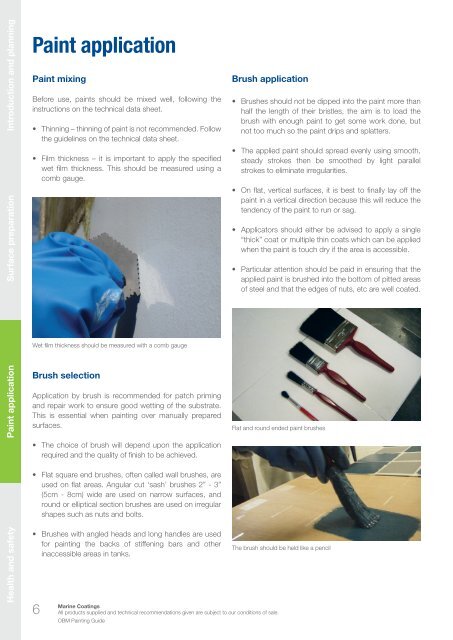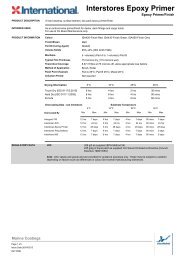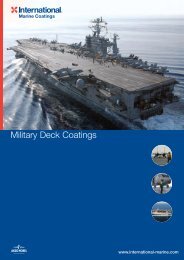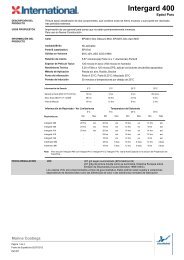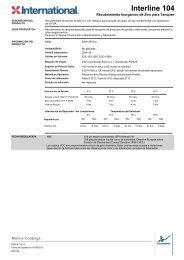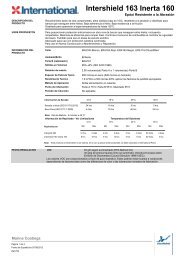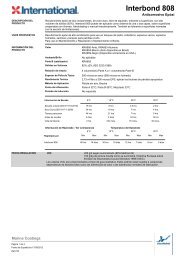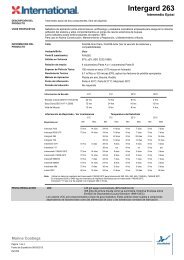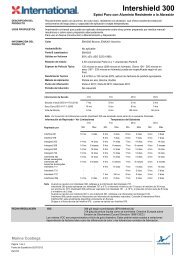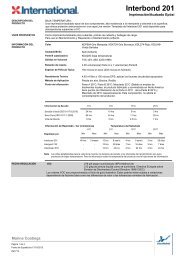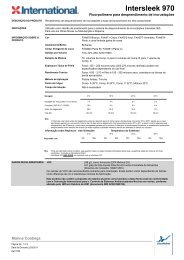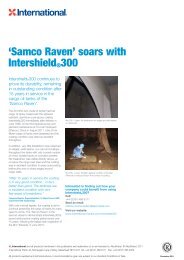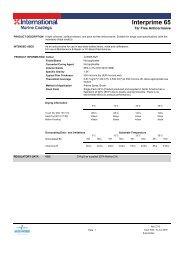Onboard Maintenance Painting Guide - International Marine Coatings
Onboard Maintenance Painting Guide - International Marine Coatings
Onboard Maintenance Painting Guide - International Marine Coatings
You also want an ePaper? Increase the reach of your titles
YUMPU automatically turns print PDFs into web optimized ePapers that Google loves.
Introduction and planning<br />
Surface preparation<br />
Paint application<br />
Health and safety<br />
Paint application<br />
Paint mixing<br />
Before use, paints should be mixed well, following the<br />
instructions on the technical data sheet.<br />
• Thinning – thinning of paint is not recommended. Follow<br />
the guidelines on the technical data sheet.<br />
• Film thickness – it is important to apply the specified<br />
wet film thickness. This should be measured using a<br />
comb gauge.<br />
Wet film thickness should be measured with a comb gauge<br />
Brush selection<br />
Application by brush is recommended for patch priming<br />
and repair work to ensure good wetting of the substrate.<br />
This is essential when painting over manually prepared<br />
surfaces.<br />
• The choice of brush will depend upon the application<br />
required and the quality of finish to be achieved.<br />
• Flat square end brushes, often called wall brushes, are<br />
used on flat areas. Angular cut ‘sash’ brushes 2” - 3”<br />
(5cm - 8cm) wide are used on narrow surfaces, and<br />
round or elliptical section brushes are used on irregular<br />
shapes such as nuts and bolts.<br />
• Brushes with angled heads and long handles are used<br />
for painting the backs of stiffening bars and other<br />
inaccessible areas in tanks.<br />
6<br />
Brush application<br />
<strong>Marine</strong> <strong>Coatings</strong><br />
All products supplied and technical recommendations given are subject to our conditions of sale.<br />
OBM <strong>Painting</strong> <strong>Guide</strong><br />
• Brushes should not be dipped into the paint more than<br />
half the length of their bristles, the aim is to load the<br />
brush with enough paint to get some work done, but<br />
not too much so the paint drips and splatters.<br />
• The applied paint should spread evenly using smooth,<br />
steady strokes then be smoothed by light parallel<br />
strokes to eliminate irregularities.<br />
• On flat, vertical surfaces, it is best to finally lay off the<br />
paint in a vertical direction because this will reduce the<br />
tendency of the paint to run or sag.<br />
• Applicators should either be advised to apply a single<br />
“thick” coat or multiple thin coats which can be applied<br />
when the paint is touch dry if the area is accessible.<br />
• Particular attention should be paid in ensuring that the<br />
applied paint is brushed into the bottom of pitted areas<br />
of steel and that the edges of nuts, etc are well coated.<br />
Flat and round ended paint brushes<br />
The brush should be held like a pencil


